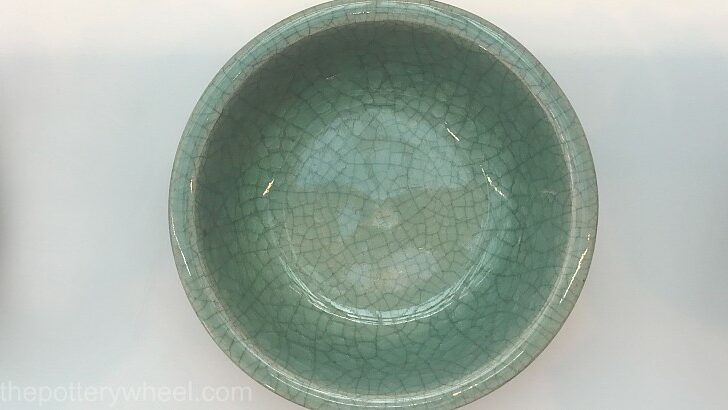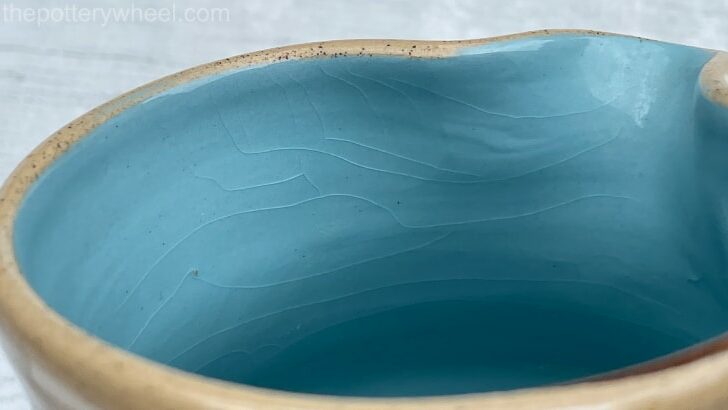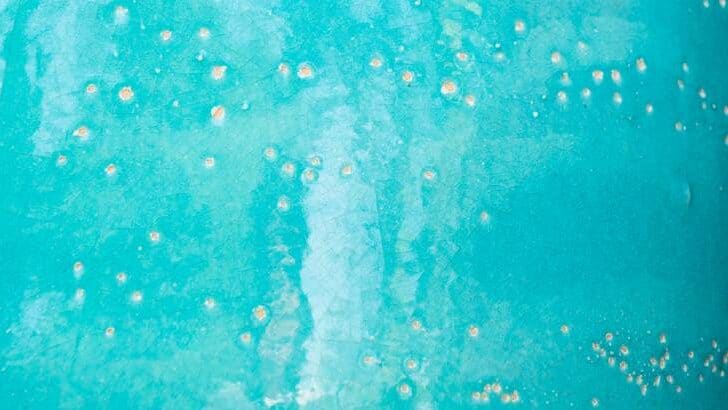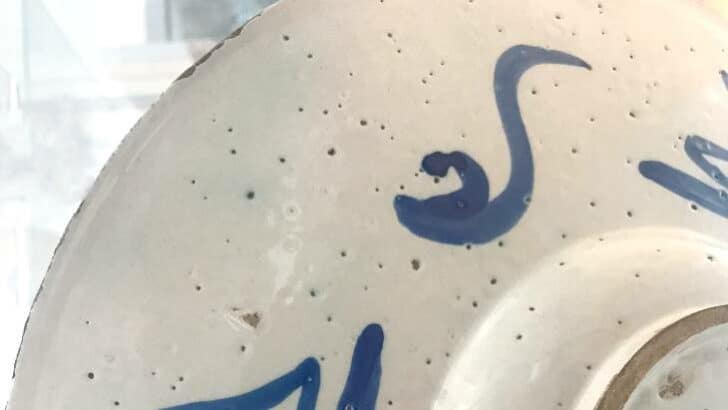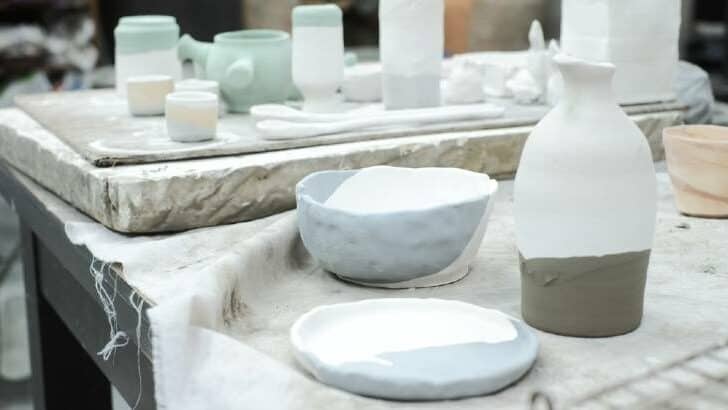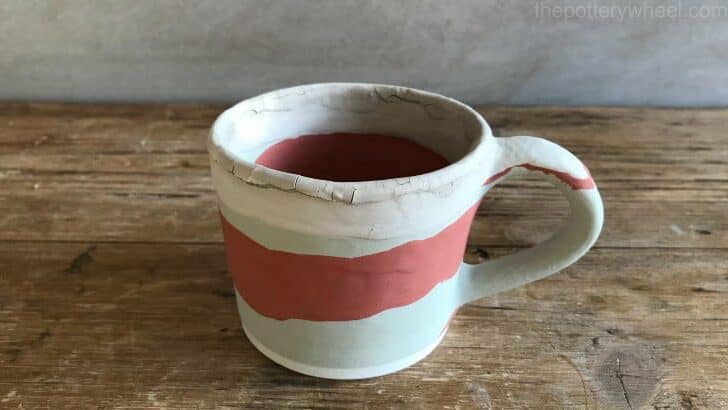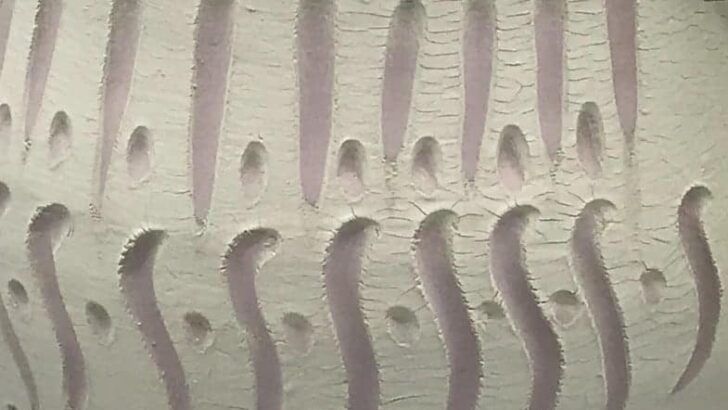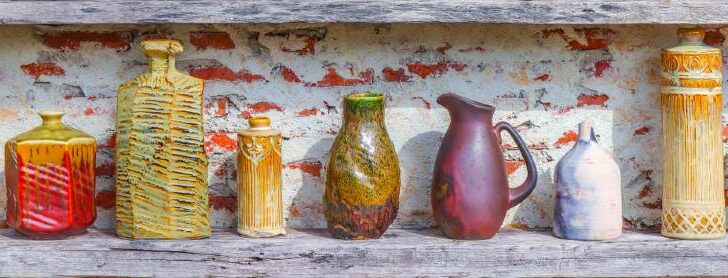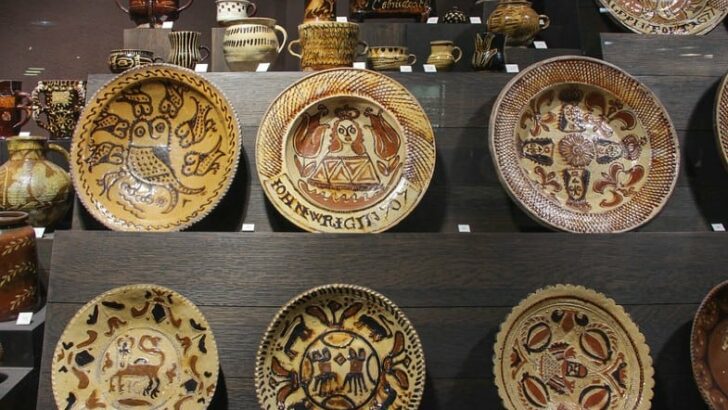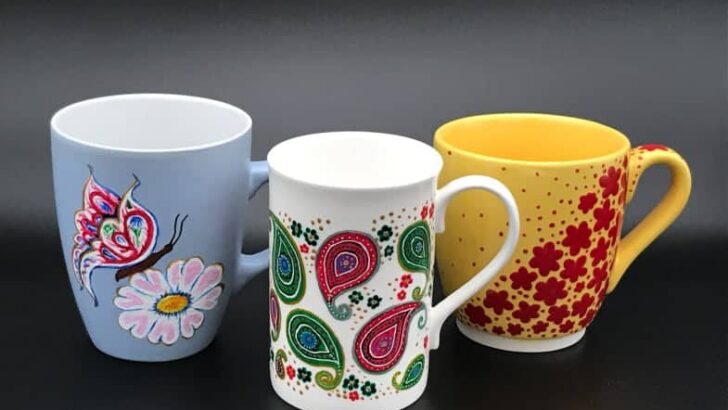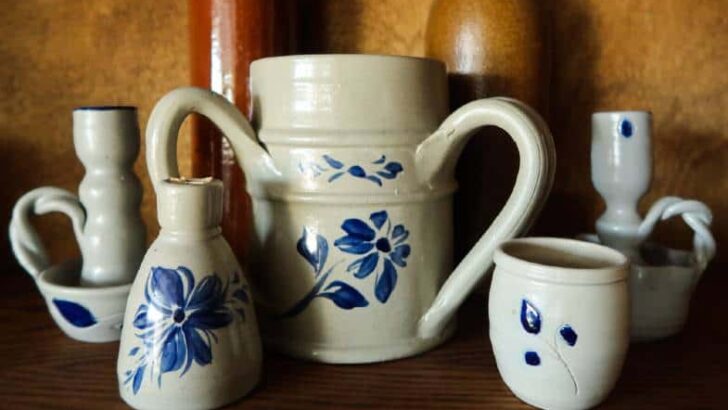Your cart is currently empty!
Glazing & Decorating
-
Crazing in Pottery Glaze – Causes & Ways to Prevent It
Crazing in pottery glaze is a network of very fine cracks that cover the glaze on a piece of ceramics. Sometimes potters deliberately want to create a crazing effect, and this is known as crackle glaze. But a lot of the time crazing is considered to be an unwanted glaze defect. Crazing happens when a…
-
Are Dishes with Crazing Safe to Use? 3 Hazards to Consider
Crazing looks like a very fine network of cracks in the glossy glazed surface of your ceramics. If you run your finger over the fine cracks, it will most likely feel smooth. But are dishes with crazing safe to use? No, dishes with crazing are not safe to use for food and drink. The tiny…
-
Pinholes in Pottery Glaze – 6 Causes and Simple Solutions
Pinholes in pottery glaze are one of the most common glaze defects you will encounter. They can be tricky to resolve because they are often caused by more than one factor. However, through a process of elimination, you can often find the main culprit and fix your pinholing issue. It may just take a bit…
-
Are Pinholes in Glaze Food Safe? – Keep It Or Trash It?
Pinholes in pottery glaze can ruin the look of a piece. They are a pest and a disappointment when you unload the kiln. But a more pressing question is whether pinholes in glaze are food safe. Can the affected pots be used, or do they need to go into the trash? It’s often said that…
-
What Happens When You Put too Much Glaze on Pottery?
Applying glaze is a learning curve. It can be tricky to control exactly how much you apply. This article is about what can happen if you put too much glaze on pottery. If you put too thick an application of glaze on pottery, several things can occur. The glaze may crack and flake off as…
-
9 Reasons Your Glaze is Not Sticking to Your Bisque
There are many different reasons why your glaze is not sticking to your bisque pottery. Maybe it looks fine when you apply it and it is damp, but it flakes off as it dries. Or maybe it’s simply rolling off the bisqueware as you try to apply it. Luckily, there is always a solution, it…
-
Image Transfer onto Clay – Perfect Photos on Your Pottery
There are various methods of image transfer onto clay. However, if you specifically want to transfer photographs onto clay, there is a simple technique that works extremely well. This guide will take you through the process step by step. I used the following process to transfer this image onto a clay slab box. Image Transfer…
-
Underglaze Flaking, Cracking and Peeling – Top Solutions
I love using underglaze, and for the most part, I find it very versatile and reliable. However, just occasionally, I have had an issue with underglaze flaking, cracking, and peeling. So, I went on a mission to find out why this was happening, and this is what I have discovered… The most common cause of…
-
Decorating Pottery – 21 Great Ways to Decorate Clay
There are lots of different ways of decorating pottery. And each of these techniques can be used to put your own individual stamp on a piece of ceramics. Decorating pottery can be done at different stages in the process of making a piece of ware. For example, glazing pottery is done after the pot has…
-
Slipware – Where Does it Come From? and How is it Made?
Slipware is a form of ceramics that involves decorating lead-glazed earthenware. Primarily, slip is a liquid form of clay particles suspended in water. That is the simplest form. In its sophisticated form, slip features feldspars, colorants, frits, and fluxes. Usually, slip is in a bright color that bears great contrast to the body of the…
-
Painting Mugs – 11 Amazing Ways to Paint Your Own Mug
Painting mugs is a great way to personalize gifts. It can be a great way to express your creativity, whatever your age. And it’s a fun way to keep children entertained when they are at a loose end. There are lots of different ways to paint your own mugs. But if it’s not something you’ve…
-
Salt Glazed Pottery – About Salt Glazing, Past, & Present
Salt glazing has been around since the 14th century. And though it’s no longer used as an industrial way of making pottery, it is still popular amongst individual potters. Small craft potteries still produce beautiful salt glazed pottery. In this article, I dive into how exactly salt glaze pottery is made. I’ll also look at…

